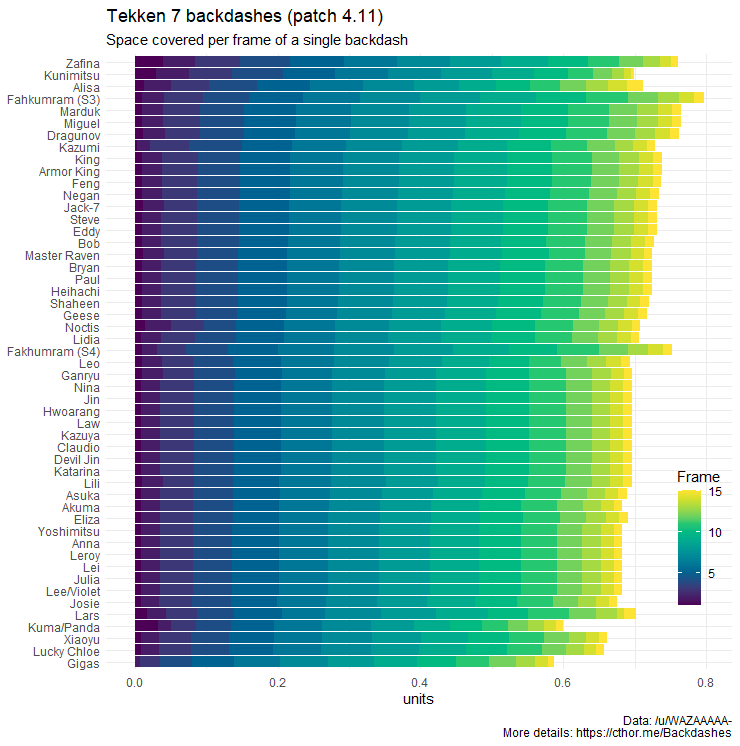
Method
Using a frame-perfect macro and direct memory access to the Tekken process distance value:
- Training mode with Player 1 as the character to be tested and Player 2 as Heihachi, whose idle stance doesn’t move
- Reset
- Jump (so the first b in the backdash can be buffered)
- Input b,b with the first b being during the jump, final b being exactly as the jump ends
- Take the distance value at every frame of the backdash
Further study
The size of a character’s hitbox plays a big role in how evasive they are.
Characters like Marduk, Miguel, and Dragonuv have fast backdashes that suggest they are almost as evasive as Alisa. Experience suggests the gap between them is larger than the data here indicates, and hitbox sizes seem like a plausible explanation.
To get a better picture of how evasive each character is as a whole, a series of tests should be done against them, i.e. checking who can backdash out of this or that situation.
Appendix
Huge thanks to WAZAAAA for providing the AHK scripts for direct memory access that greatly improved the quality of the data.
Differences from previous version
The previous version of this page was very different, both how the data was obtained and how it was visualised.
The distance value is read from memory directly, which allows for both frame-perfect accuracy and maximum precision (not just 2 decimal places).
The macro sends more accurate inputs by using the Tekken process frame counter to step ahead, rather than relying on the assumption that 1 frame = 16.667ms.
The data for backdash speed:
-
is obtained in a more straight-forward manner. Rather than doing 5 backdashes with perfect KBD for all backdash lengths and dividing by 5 and attempting to factor out the affect of the KBD, we just… do a backdash.
-
has a different visualisation. Instead of categorising the backdashes into groups and tiers based on regressions (the “evasiveness score” and curve fitting to find similar backdashes), the data is presented in its entirety. This way there’s no need to decide if, say, Noctis being fast on frames 1-3 should put him above other characters that are faster overall.
The data for KBD speed (not finished):
-
is considerably more comprehensive, within the full range of reasonable human input, rather than only perfect, inhuman input.
-
is measuring only the KBD itself and not also the backdash
-
is visualised separately from the backdash speed, to better emphasise how they are independent of each other.
Player 2 in all tests is Heihachi. His idle animation is perfectly still, which is known because the distance between two idling Heihachis stays at exactly 2000.0000. This is more consistent than a grounded opponent, and certainly more consistent than the grounded opponent being a mirror.
